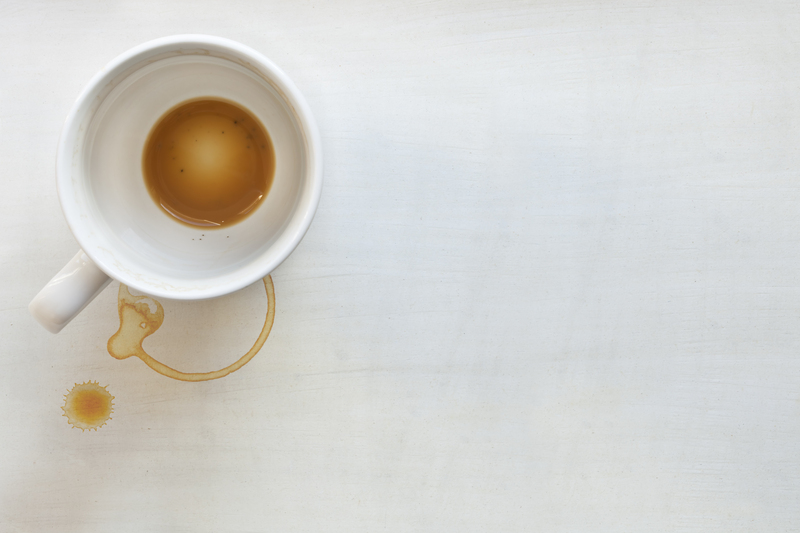The Secret to Sparkle: Jewellery Cleaning Techniques
There's something magical about jewellery--how it transforms everyday moments into special ones, its ability to catch the light, turning heads with every shimmer. But even the most dazzling pieces can lose their luster over time due to everyday wear, exposure to the elements, and natural skin oils. The solution? Regular and proper jewellery cleaning. In this comprehensive guide, you'll discover the secrets behind effective jewellery cleaning techniques, ensuring every piece in your collection shines its brightest.

Why Clean Your Jewellery Regularly?
Jewellery isn't just an accessory--it's an investment and often a sentimental treasure. Dirt, grime, and environmental pollutants can cause stones to lose brilliance, metals to tarnish, and delicate clasps to weaken. Regular cleaning not only preserves the look of your jewellery but also protects its structural integrity and potential value over time.
- Enhances Appearance: Removing buildup restores the original sparkle of stones and metals.
- Prevents Damage: Grime in clasps or settings can loosen stones, causing loss or breakage.
- Maintains Hygiene: Rings, bracelets, and earrings can collect bacteria and allergens.
- Safeguards Value: Well-maintained pieces are more likely to retain or increase in value.
Understanding Different Types of Jewellery Materials
Before exploring various jewellery cleaning techniques, it's essential to know what your jewellery is made of. Each material--be it gold, silver, platinum, diamond, gemstone, or pearls--demands specific care. Using the wrong method can lead to irreparable damage.
1. Gold Jewellery
Gold is a soft metal that scratches easily. Exposure to lotions, perfumes, sweat, and chemicals can dull its shine or cause discoloration.
2. Silver Jewellery
Silver tarnishes with exposure to air and moisture, developing a blackish layer over time. It's also prone to scratches and dents.
3. Platinum Jewellery
Platinum is stronger and more durable but can accumulate dirt and lose its natural shine with wear.
4. Gemstones and Diamonds
Diamonds are the hardest stones, but even they can appear cloudy due to oil and dust. Gemstones vary in hardness and porosity, affecting their cleaning requirements.
5. Pearls and Other Organic Gems
Pearls, opals, amber, and coral are delicate and easily damaged by harsh chemicals or excessive moisture.
Best Jewellery Cleaning Techniques for Every Type
1. Universal Gentle Cleaning Method
If you're unsure what your jewellery is made of, always start with the most delicate cleaning process. Here's a safe, gentle technique:
- Prepare a Solution: Mix lukewarm water with a few drops of mild dish soap.
- Soak: Place your pieces in the solution for 10-15 minutes. Don't soak porous stones like pearls, opals, or turquoise.
- Brush: Use a soft-bristled toothbrush to clean around settings and chains.
- Rinse: Rinse in clean water, avoiding the sink drain!
- Dry: Pat dry with a lint-free cloth.
2. Clean Gold Jewellery
- Warm Soapy Water: Gold responds well to the universal method. Avoid abrasive cleaners that can scratch the metal.
- Baking Soda Paste: For more stubborn grime, create a paste with baking soda and water, gently rub, then rinse thoroughly.
- Polishing Cloth: Gently buff with a jewellery polishing cloth for extra shine.
3. Clean Silver Jewellery
- Special Silver Polishes: Use commercial silver polishes designed to remove tarnish without scratching.
- DIY Aluminium Foil Bath: Line a bowl with aluminium foil, add hot water, baking soda, and salt. Place silver pieces in the solution for 5-10 minutes, then rinse and dry. This process reverses tarnishing through ion exchange.
- Regular Cloth Buffing: Use a microfiber or jewellery cloth to maintain luster between deeper cleans.
4. Clean Platinum Jewellery
- Use mild soapy water and a soft brush.
- Dry thoroughly to prevent water spots.
- Avoid: Harsh chemicals like bleach or chlorine.
5. Diamonds and Gemstones Cleaning
- Soapy Water Method: Works well for most diamonds and hard gemstones like sapphires and rubies.
- Ammonia Solution: Mix one part ammonia with six parts water for a deep clean (not for coloured stones, pearls, or fragile gems).
- Check Settings: Always inspect the settings before cleaning; loose stones should be fixed by a professional.
6. Clean Pearls and Delicate Gems
- Never Soak: Wipe each pearl individually with a soft, damp cloth.
- Mild Detergent: Use a solution of mild soap and water for particularly dirty pearls; dip the cloth in solution, not the pearls.
- Lay Flat to Dry: Never hang wet pearl strands as the string can stretch.
- Re-stringing: Pearls should be restrung periodically if worn often.
Advanced Jewellery Cleaning Methods
1. Ultrasonic Cleaners
Ultrasonic jewellery cleaners use sound waves to generate vibrations in a cleaning solution, dislodging dirt and debris from hard-to-reach places.
- Best For: Durable stones like diamonds, gold, platinum.
- Avoid: Porous gemstones (emeralds, pearls, opals) as the vibrations can cause cracks.
- Tip: Always read the manufacturer's instructions and consult a professional if unsure.
2. Steam Cleaners
Steam is highly effective for removing built-up oil and grime, especially from diamond jewellery and metal bands.
- Professional Use: Most jewellers offer steam cleaning as part of their services.
- Caution: Not suitable for porous or fragile stones.
3. Professional Jewellery Cleaning
For antique, sentimental, or high-value pieces, a professional clean is highly recommended. Professionals can assess each piece and use specialized equipment and techniques tailored to the exact metal and stone type.
Jewellery Cleaning Tips & Tricks for Home
- Remove Jewellery Before Activities: Take off rings and bracelets before manual work, swimming, or using chemicals.
- Avoid Exposure to Harsh Substances: Perfumes, lotions, hairsprays, and household cleaners can all affect the appearance of your jewellery.
- Regular Wipe-Down: Wipe jewellery after wearing to remove oils and residues.
- Store Properly: Keep pieces individually wrapped to prevent scratches and tangling. Silver benefits from anti-tarnish strips.
- Know When to Seek Help: If your jewellery is cracked, missing stones, or discoloured despite cleaning, take it to a reputable jeweller for assessment.
Common Mistakes to Avoid When Cleaning Jewellery
- Using Toothpaste: It's abrasive and can scratch metal and gemstones.
- Harsh Chemicals: Bleach, acetone, or chlorine can damage metals and dissolve adhesives holding stones in place.
- Over-Soaking: Soft or porous stones can absorb liquids, leading to discoloration or swelling.
- Ignoring Settings: Cleaning a piece with loose stones risks losing them.
- Paper Towels: These can scratch delicate surfaces. Use soft, lint-free cloths instead.
Jewellery Cleaning Frequency: How Often is Enough?
The right cleaning frequency ensures consistent sparkle and longevity. Here's a general jewellery cleaning schedule to keep in mind:
- Everyday Pieces (Rings, Watches): Wipe down after each wear and clean weekly.
- Special-Occasion Jewellery: Clean before and after use; store with care.
- Delicate Items (Pearls, Antique Jewels): Clean sparingly, perhaps once or twice a year, and always with the most gentle technique.
Selecting the Right Jewellery Cleaning Products
Choosing an appropriate jewellery cleaner is vital for good results. There are many options to choose from, including:
- Mild Liquid Soaps: Ideal for most data types, as long as there are no added moisturizers or harsh chemicals.
- Specialized Polishes: Designed for gold, silver, or platinum; always check for gemstone compatibility.
- Jewellery Cloths: These come infused with anti-tarnish agents and are safe for regular use.
- DIY Options: Baking soda, vinegar, and lemon can be used sparingly for tough tarnish, but with caution and proper research.
The Secret to Keeping Jewellery Sparkling Longer
Cleaning your jewellery is important, but so is maintenance. Here's how to prolong that brand-new sparkle:
- Regular Inspections: Check clasps, prongs, and settings to catch issues early.
- Avoid Extreme Temperatures: Don't expose jewellery to rapid temperature changes, which can crack stones or warp metals.
- Use Storage Cases: Individual boxes or pouches protect from dust and moisture.
- Limit Contact with Water: Remove jewellery before bathing, swimming, or washing hands.
- Re-plate Gold and Silver: White gold and silver pieces may need professional re-plating every few years to retain their finish.

Frequently Asked Questions About Jewellery Cleaning
Can I use baking soda to clean all types of jewellery?
No. Baking soda is abrasive and can scratch soft stones and metals. Use only on solid gold or as recommended for tough silver tarnish, avoiding gemstones and pearls.
How can I clean antique or vintage jewellery?
Use only the mildest cleaning techniques and consult a jeweller before cleaning valuable or historic pieces. Antique items might have glue-set stones or enamel that dissolves in water.
Should I clean my jewellery at home or take it to a professional?
Daily and weekly maintenance can safely be done at home for most contemporary pieces, but high-value, sentimental, or fragile items should be professionally cleaned at least once a year.
Conclusion: The Brilliance of Proper Jewellery Care
The secret to lasting sparkle in your jewellery collection lies in understanding, careful cleaning, and mindful storage. By following these jewellery cleaning techniques, you'll preserve both the appearance and the emotional value of your favourite pieces for years to come.
Whether your jewellery is a cherished heirloom, a fashion statement, or a daily reminder of life's milestones, keeping it clean is an act of appreciation. With gentle care and the right techniques, every piece can continue to glimmer--brightly reflecting your own unique style and story.
Remember: A little attention goes a long way. Don't wait for your treasured pieces to lose their shine. Put these jewellery cleaning secrets to use, and let your sparkle shine through!


